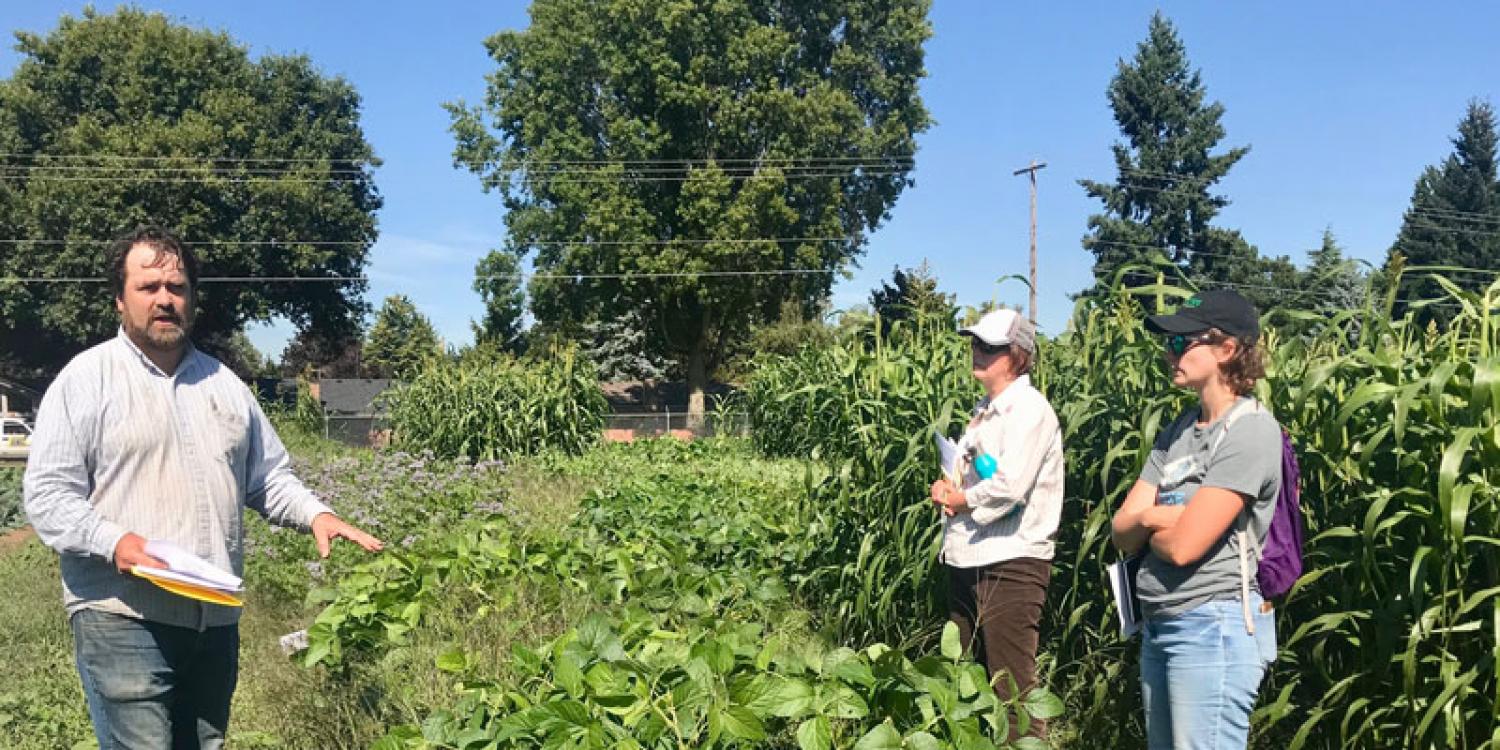
Farmers use cover crops to improve soil, avoid erosion and keep weeds at bay, but there was no formal way to corral the available information for the growers who need it. Nick Andrews, Oregon State University Extension Service organic vegetable specialist, and Clare Sullivan, OSU Small Farms specialist, took the reins to help solve the need to gather and get the word out about the research and use of cover crops, and led collaboration among colleagues throughout the western United States.
In 2018, the team formed the Western Cover Crops Council (WCCC) to facilitate and enhance communication and collaboration among growers, Extension agents, researchers and other agricultural professionals. The council works to transfer information and technology that promotes the successful adoption and integration of cover cropping in the western United States. To reach that goal, the council is gathering information about regional rates of cover crop adoption and barriers to adoption. While the information-collecting continues, a strategic network is growing among agricultural professionals who are conducting research and outreach, and farmers who are using cover crops.
By the beginning of 2020, the fledgling council had elected officers, including Andrews as secretary and Sullivan as vice president, and secured four grants. The funds will help support on-farm cover crop demonstrations in Oregon, Washington and Idaho, as well as develop simple and systematic evaluation criteria for farmers. The council is also tasked with introducing producers to the Pacific Northwest Cover Crop Selection Tool, a U.S. Department of Agriculture guide that helps growers and conservation planners select cover crop species adapted to their climate, soils, and teaches the purposes of cover crops. Grants also support development of the WCCC website, development of cover crop educational presentations, a cover crop survey of producers in the western states, and sub-regional cover crop webinars.
The cover crop survey was completed by more than 900 farmers. It showed an increase in cover-cropped acreage from 30,000 in 2016 to 52,000 in 2020. The most important barriers to cover cropping were the expense, lack of knowledge, lack of time, and difficulty establishing cover crops. Top information sources were Extension Service websites, other farmers and agricultural publications. Sixty-one percent of respondents were not aware of the USDA Natural Resources Conservation Service’s Environmental Quality Incentives Program cost-share funds that can offset the cost of cover cropping. Sub-regional meetings have been conducted to work with WCCC to tackle priority areas of research. A training webinar for agricultural professionals on how to use the Cover Crop Selection Tool was planned for summer 2020, followed by on-farm demonstrations using the tool.
Due to COVID-19, the sub-regional meetings have been redesigned as online webinar series. On-farm trials and demonstrations are helping farmers evaluate cover crops on their farms, and share performance data. This work fosters outreach and engagement, cover crop business opportunities and increases the use of cover crops.